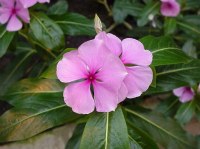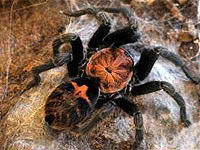La investigadora Sarah O"Connor, le ha inoculado genes de bacterias a una vinca de Madagascar (Catharantus roseus) lo que le permitió agregar cloro y bromo a los alcaloides que la vinca produce normalmente.
Los alcaloides tienen propiedades farmacéuticas, pero cuando se le unen compuestos como el bromo o el cloro, resultan ser más efectivos y sus efectos más duraderos. El equipo de O"Connor está interesado en un alcaloide llamado vinblastina que se utiliza habitualmente en tratamiento de ciertos tipos de cáncer, como el linfoma de Hodgkin.
"Intentamos utilizar mecanismos biosintéticos – señala O"Connor – para generar una gran variedad de interacciones con productos naturales. Si retocamos la estructura de productos naturales, a menudo obtenemos mejoras en las cualidades farmacéuticas". El estudio fue publicado en la revista Nature.
Noticia publicada en Libertad Digital (España)
Enlaces a sitios |
| |
AARP: Oregon Prescription Drug Research compares the safety and effectiveness of medicines used to treat high cholesterol, chronic pain, heartburn and ulcers, and joint and muscle pain.
| AdvancePCS Performance Drug List guide to generic and prescription drugs for select illnesses.
|
Ask a Patient features consumer ratings of prescription drugs, including comments on side effects, pharmaceutical rankings, reports, polls, and research help.
| Ask Dr. Shulgin aims to foster increased understanding and debate about psychedelics, empathogens, and other cognitive enhancing substances.
|
Blacktriangle.org pharmaceutical-related talk about medicines and adverse drug reactions.
| Cafepharma site for pharmaceutical sales professionals and those interested in the industry.
|
Consumer Reports Best Buy Drugs features information about the comparative effectiveness and cost-effectiveness of many widely used prescription drugs.
| CoreyNahman.com pharmaceutical information and news.
|
Dear Pharmacist offers medical advice and tips on medications and their uses.
| Detergent Chemistry Detergent Chemistry
|











 Imagen: Agencias / Internet
Imagen: Agencias / Internet





